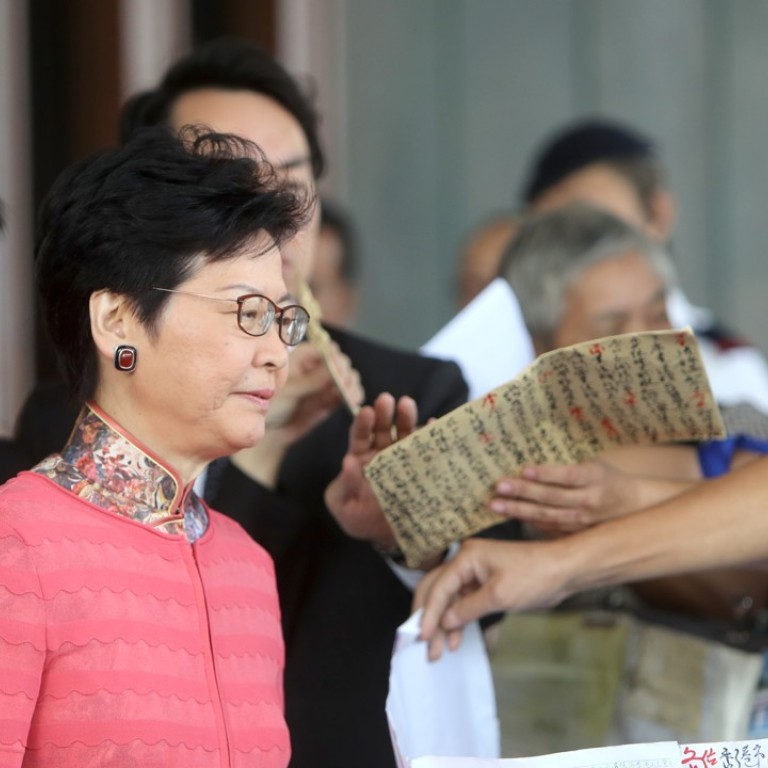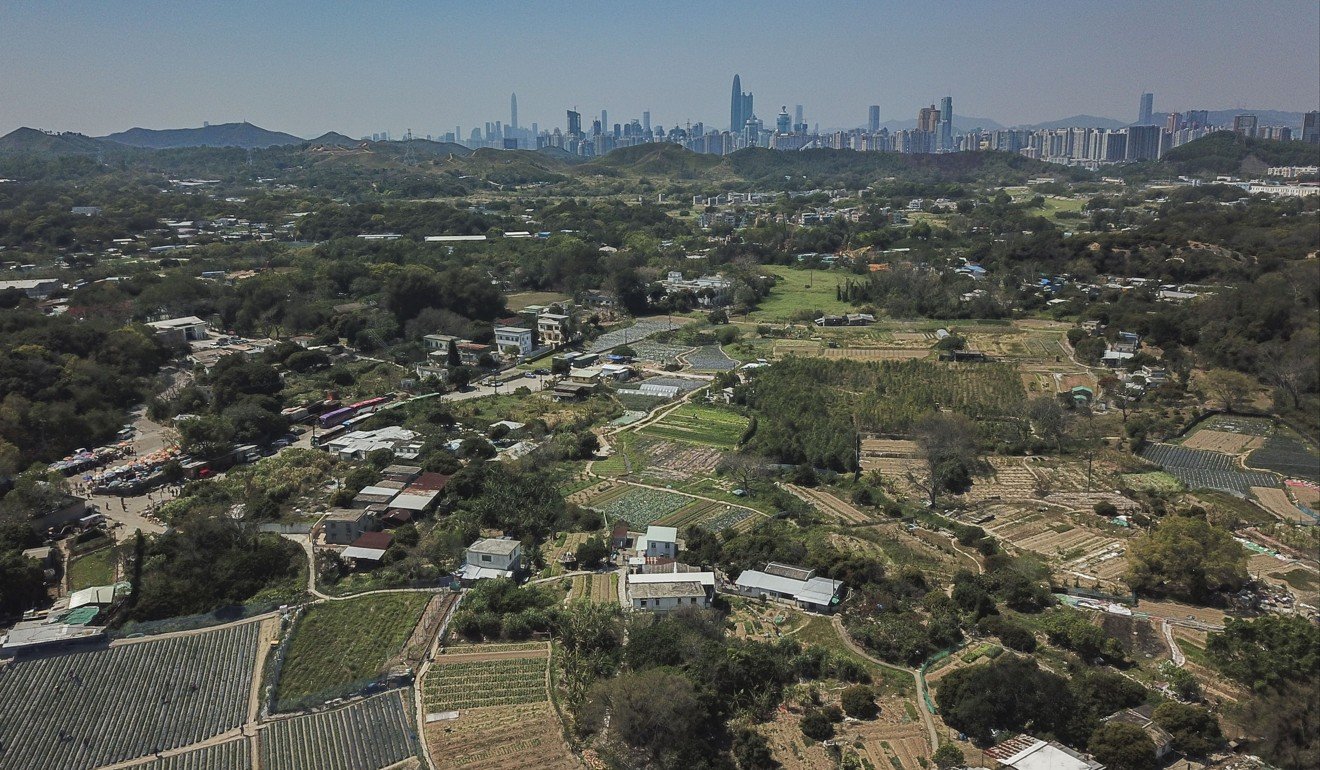
Exclusive | Bulk of reclaimed land will be used for public housing, Hong Kong’s chief executive to announce in policy address
Source tells the Post Carrie Lam’s housing plans will rely on large-scale land reclamation, but she will set aside the bulk of it for subsidised housing and also offer option to use private farmland for building homes
Reclamation will be a highlight of the housing strategy Hong Kong’s leader is set to unveil in her policy address next Wednesday, but she will try to sell the controversial option to homebuyers with a promise to use most of the land created for subsidised and public rental flats, the Post has learned.
The pledge to use the bulk of new land for public rental and subsidised housing would apply to this public-private partnership option, the source said, and the government was still studying what proportion would be financially feasible.
“It will not be surprising to see both options mentioned in the policy address,” the source added. “The government will try to address public worries arising from the two options.”
The announcement will come before public feedback on 18 potential land creation options are fully collected through an official consultation exercise by the government’s land supply task force.
Asked if the policy would pre-empt the findings of the public consultation, the source said: “As a matter of fact, [the two options] were already mentioned in Lam’s election manifesto … the task force is trying to reach a consensus.”
The impact of these options should not be underestimated, the source added, as the chief executive had already announced that all types of subsidised flats would be made more affordable by partially separating prices from their market value.
Under the new pricing mechanism announced by Lam in June, the cost of subsidised housing will relate to a family’s budget. The calculation will be based on the median monthly household income of families who do not own a home.
For example, using the median household income for the fourth quarter of last year, families making HK$39,500 (US$5,000) or less per month will be able to afford 75 per cent of subsidised flats in a project in future. The discount is equivalent to about 48 per cent off the market price instead of the previous 30 per cent.
Hong Kong rural leaders propose artificial island to free space in land-starved city
Both the government and Our Hong Kong Foundation, a think tank led by the city’s first chief executive, have recommended building an artificial island to the east of Lantau, which is expected to take more than 20 years. In August the think tank floated the idea of building a 2,200-hectare island for housing 1.1 million people, doubling the size of the government’s original proposal.
“Such a proposal would need to be scaled down,” the source said. “It is a bit massive.”
A major worry that has surfaced during the public consultation is that newly reclaimed land may be used primarily for private flats priced beyond the budgets of most homebuyers.
On partnering with developers to build homes on unused farmland, which was likely to take about 10 years, the source said a committee would be set up comprising government officials and professionals outside the administration to vet applications and address public concerns about possible collusion.
The land supply task force has estimated that no less than 1,000 hectares of agricultural land is currently being held by developers.
Under the public-private partnership, the government is expected to provide basic infrastructure as an incentive for developers to unlock the potential of their land banks and commit to setting aside a substantial proportion for building affordable housing.
Lee Wing-tat, chairman of think tank Land Watch, called on Lam to pledge to reserve at least 70 per cent of reclaimed residential land for public or subsidised housing.
“This is the most effective way to reduce public concern or worries that the government is just planning to let developers build luxury flats,” Lee said.
He added that financial feasibility was a significant but not all-important consideration.
“They should not let financial feasibility dictate their decision,” he said. “Our government is so wealthy, so what if they run into a project deficit by allocating more land for public housing instead of selling more land to developers? Reclamation is a long-term project that takes 15 to 20 years; in return, they can provide housing for tens of thousands of households.”

Roger Nissim, an adjunct professor at the University of Hong Kong’s department of real estate and construction, said reclamation was “inevitable as part of Hong Kong’s answer to future land supply”.
However, the government’s proposal to build the East Lantau Metropolis was oversized, he suggested. The aim of housing 700,000 people was based on a population projection of 9 million, whereas official data indicated the population would peak at 8.22 million in 2043, and decline thereafter.
“Because of its relatively remote location, lack of supporting infrastructure, depth of water, [the East Lantau Metropolis] will be hugely expensive at HK$500 billion, and is an all or nothing project which is an unnecessary risk because it would, in effect, be putting all our eggs into one basket,” Nissim said.
Typhoon Mangkhut, like Jebi, showed why East Lantau reclamation is wrong option
He warned the mega project would be “very vulnerable” to flooding caused by rising water levels such as tidal surges associated with super typhoons.
Instead, he suggested, a nearshore reclamation of 212 hectares at Nam Tong in Tseung Kwan O would be “far more rational”. Its population of 350,000 would be less vulnerable to extreme weather, given the new site would be physically linked to an existing land mass.
It would cost HK$100 billion, and could be built in three phases to meet the actual demand as it emerges, making it “far better value for money in a better time frame”.
“[The East Lantau Metropolis] has been presented or forced upon us as the ‘silver bullet’ solution to our land needs when in fact it needs to weighed up and compared with other, in my view, more rational alternatives like Nam Tong,” Nissim said.
Additional reporting by Naomi Ng

